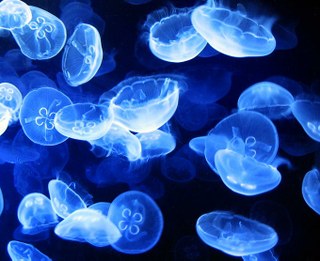The pain experienced with jellyfish stings is due to the many stinging cells (nematocysts) firing venom-laced ‘needles’ into your skin. Scientists have spent years researching pain relief for jellyfish stings. While there isn’t a silver bullet for all types of jellyfish stings, several trends are clear:
- Urine is largely ineffective at alleviating pain, contrary to the long-held wive’s tale. In fact, urine can make the pain worse (more on this later).
- Vinegar is better. Vinegar actually neutralizes nematocysts. Vinegar is not a cure-all and may worsen the pain for certain stings such as those from jellyfish’s close cousin, the Portuguese Man O’ War (if you get stung by one of these, good luck to you!). But with true jellyfish, vinegar is an effective topical solution for relieving pain.
- If no vinegar is available (who brings vinegar to the beach?), seawater is your next best bet. Use seawater to wash away as much of the stinging cells as possible.
- Fine beach sand can also be used to gently scrub away stubborn nematocysts. The trick is to avoid applying too much pressure to the effected area. Pressure triggers nematocysts to fire, so gently is the operative word.
- Unlike seawater, freshwater is about the worst thing you can apply. Freshwater triggers nematocysts to fire. This is why urine can aggravate the pain: Urine (especially from a well-hydrated person) is mostly freshwater.
If you’re heading out to the beach this summer, watch out for jellyfish, which seem to be invading our beaches (and nuclear power plants) in recent years. And if you are an unlucky victim of jellyfish sting, hopefully this information can help. You might even want to consider packing a bottle of vinegar before you head out for your fun in the sun. You can thank me later.











0 Comments